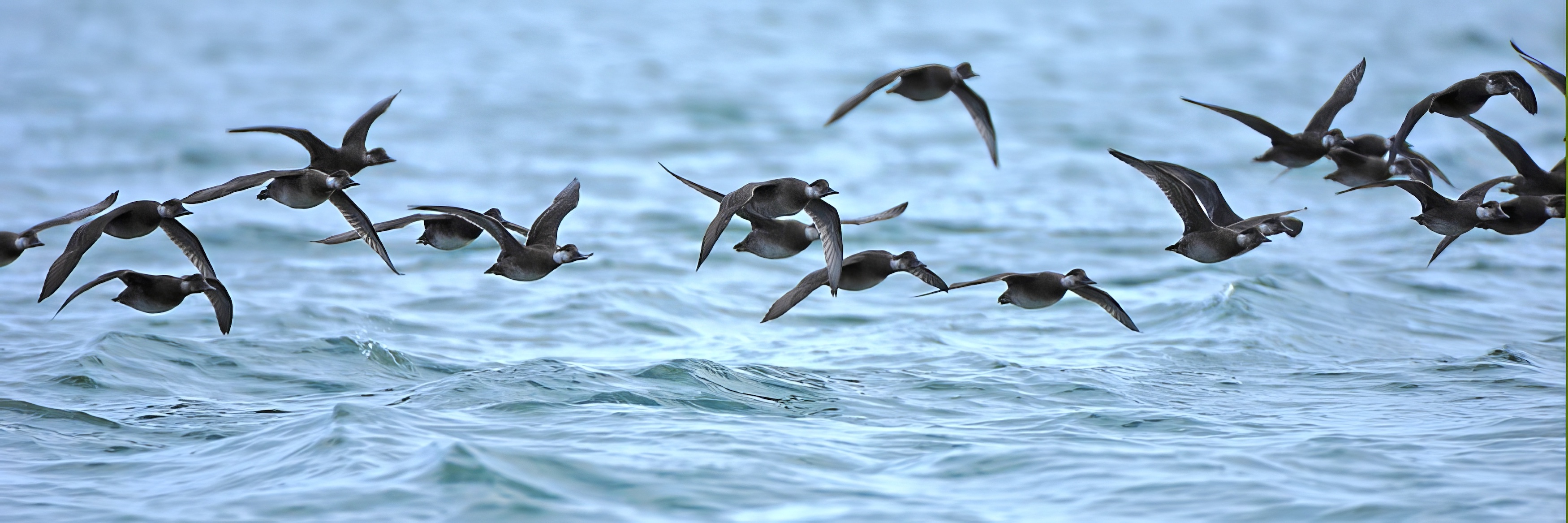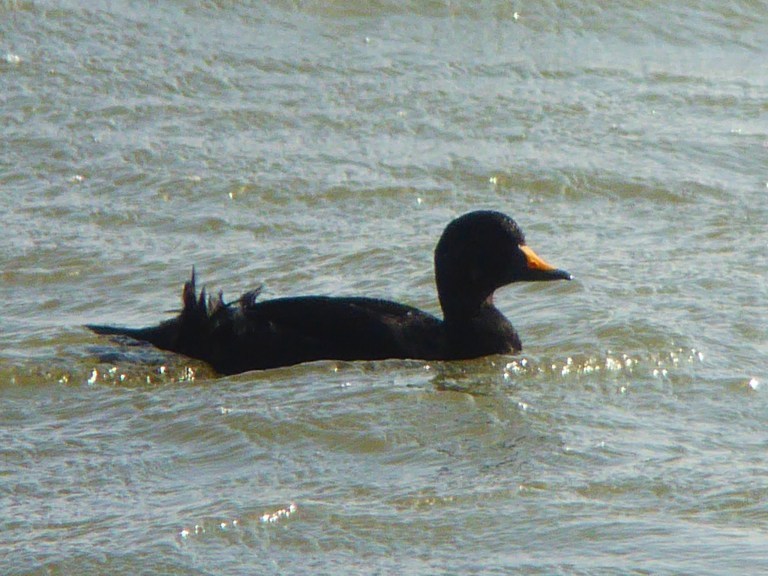Common Scoter Melanitta nigra
Common offshore passage migrant and winter visitor, scarce in summer but autumn movements begin in Jun-Jul. Very scarce inland.{mprestriction ids="1,2,3,4,5,6,7"}


Common Scoter: left, flock at sea, The Wash September 18th 2010 (Steve Keightley); right, male, Witham Mouth March 2016 (Dave Roberts).
Regular all along the coast from autumn until spring, the Atlas reported that up to the mid-1990s flocks of several hundred and rarely more than a thousand could be seen along the coast. There is now good evidence from visible migration counts of a westerly migration along the Humber, presumably to the Mersey, in the autumn. More recently (2020) nocturnal migration recordings have shown that there is a wide front of spring migration across both the country and the county from west to east in March. In Lincolnshire large flocks can be found well out to sea, making it difficult to accurately estimate the wintering population, and WeBS data cannot show long term trends for this species from onshore counts. The volume of passage and the number of birds wintering varies significantly from year to year as reported in LBR and viewed from the shore. In the 8-year period to 2021, there was a peak of over 2,700 in October and November 2018. The largest flocks counted tend to be off Saltfleetby-Theddlethorpe NNR where there were 2,000 in November 2016 and 1,500 in November 2018; there were also 1,650 off Friskney in the Wash in February 2018. Peak count in 2019 was 1,800 Tetney Marshes and in 2020 it was a count of 2,000 Gat Sands, The Wash.
(Account as per new Birds of Lincolnshire (2021), included September 2022)
